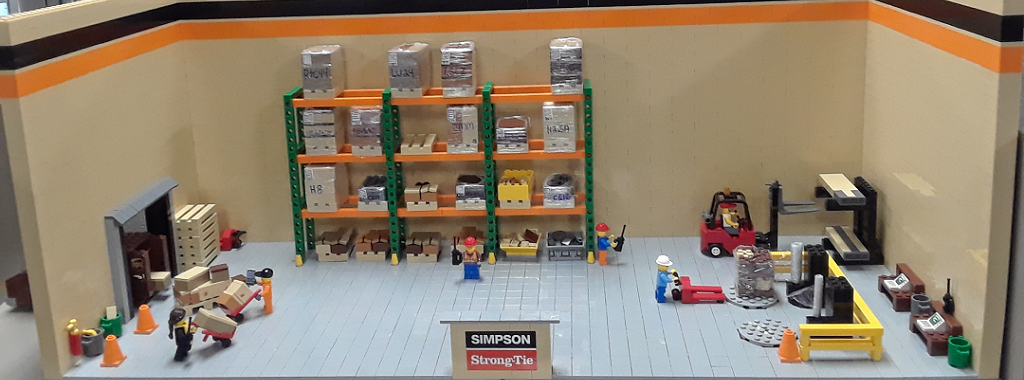- Joined
- Jan 17, 2010
- Messages
- 9,297
- Reaction score
- 11,836
Amazon pledged to create ‘Earth’s safest place to work’. Three warehouse workers speak about their experiences

Amazon workers left unable to work by injuries on the job have resorted to online fundraising campaigns to pay their bills as they fight for compensation and disability benefits.
Three current employees, injured while working in the technology giant’s warehouses, described a “bureaucratic, terrible process” while they sought financial support. One was rendered homeless.
During interviews with the Guardian, they alleged the company ignored workers’ concerns over the strains of warehouse work, denied requests for compensation or benefits after injuries, and put productivity above all else.
In response, Amazon acknowledged it had found a “few” problems, but claimed the workers had provided “a lot of inaccurate information”. The company did not specify which parts of the accounts it deemed inaccurate.

Amazon – one of the world’s largest employers, with 1.5 million staff across the world – has long faced criticism over the working and safety conditions inside its warehouses. It has repeatedly pushed back, claiming that the company was “working toward being best in class” on safety as part of its declared intent to create “Earth’s safest place to work”.
Over the years, however, numerous workers have come forward with troubling stories of injuries incurred on the job; being sent back to work by Amazon’s on-site medical care unit, Amcare; and long fights and delays in trying to obtain workers compensation, medical care, accommodations and disability benefits in the months and years that followed
Feeling nauseous and dizzy after being struck, Williams went to Amcare, where he was given aspirin and ice. He went to urgent care, because he said they didn’t know what to do for him at Amcare.
Returning to work the next day, Williams said he was placed on light duty, but kept getting bothered by managers asking what he was doing sitting around despite accommodations due to his injury. “They just sit you there in uncomfortable places, and you’re on display like a human zoo in the middle of the warehouse,” he recalled.

“That’s all they’re concerned about: how much you can make them, how much they can push out of you, how little they can give you, and how much they can get out of you.”
Just five months later, in February, Williams was injured on the job again after being tasked with repeatedly lifting heavy packages, without being rotated to less intense departments. When he tried to lift a package, all of a sudden he felt a shot of pain in his wrist and elbow, and couldn’t pick it up.
He went to Amcare, before heading to urgent care on his own accord after waiting for an hour at Amcare.
Out of work and injured, Williams has yet to receive disability benefits. “I’m battling with the workers compensation insurer, they give me the runaround a lot,” he said. “Because I hadn’t been there a full year when I got hurt in February, I wasn’t able to receive my full benefits, which is why we’re homeless – because we can’t afford housing.”

Keith Williams with his family. Photograph: Courtesy Keith Williams
In April, Williams and his family were evicted from their home after a dispute with a landlord. Unable to raise the funds for a new rental, they were forced to move into a motel.
As Williams recovers from his repetitive motion injury, a GoFundMe campaign was started on his family’s behalf while they grappled with the the financial impact of his workplace injury.
“I have no grip strength,” he said. “I can’t carry things very long. Even a gallon of milk is tiring … My day to day life has been hit so hard, everything has an added measure of difficulty now.
“There’s just no thought, or no care to, what kind of strain gets put on the body, even though we would constantly say something about it.”

“Over the course of a 12-hour shift, I do three 12-hour shifts,” Manno said. “I could lift thousands of pounds over the course of the shift, and my hands were still visibly swollen, so my hands started to get worse.”
In May 2022, when reaching for a high box, she felt pains down her back, both arms, and down into her legs.
After her initial claim for disability benefits faced resistance, Manno retained an attorney. Eventually, her case was approved.
In January 2023, eight months after the injury, she went to see a spinal surgeon. “He agreed that it was during the course of my job that these injuries occurred,” Manno said. “Up to that point, I had had no type of treatment. They wouldn’t allow anything.”
Through the course of working while injured, Manno was able to work with restrictions. She began physical therapy, but said it didn’t help alleviate her pain.
During this time, while driving a turret truck in the Amazon warehouse, which doesn’t require lifting, Manno got dizzy and lightheaded, sostopped and informed her supervisor. She says she was told to sit down, but ordered 20 minutes later to go back to the truck and finish the job.

Amazon workers left unable to work by injuries on the job have resorted to online fundraising campaigns to pay their bills as they fight for compensation and disability benefits.
Three current employees, injured while working in the technology giant’s warehouses, described a “bureaucratic, terrible process” while they sought financial support. One was rendered homeless.
During interviews with the Guardian, they alleged the company ignored workers’ concerns over the strains of warehouse work, denied requests for compensation or benefits after injuries, and put productivity above all else.
In response, Amazon acknowledged it had found a “few” problems, but claimed the workers had provided “a lot of inaccurate information”. The company did not specify which parts of the accounts it deemed inaccurate.

Amazon – one of the world’s largest employers, with 1.5 million staff across the world – has long faced criticism over the working and safety conditions inside its warehouses. It has repeatedly pushed back, claiming that the company was “working toward being best in class” on safety as part of its declared intent to create “Earth’s safest place to work”.
Over the years, however, numerous workers have come forward with troubling stories of injuries incurred on the job; being sent back to work by Amazon’s on-site medical care unit, Amcare; and long fights and delays in trying to obtain workers compensation, medical care, accommodations and disability benefits in the months and years that followed
‘This is why we’re homeless’
In August 2023, Keith Williams was loading containers by himself off a trailer on the shipping dock at Amazon’s SWF1 warehouse in Rock Tavern, New York. A computer desk fell onto him, hitting the back of his head.Feeling nauseous and dizzy after being struck, Williams went to Amcare, where he was given aspirin and ice. He went to urgent care, because he said they didn’t know what to do for him at Amcare.
Returning to work the next day, Williams said he was placed on light duty, but kept getting bothered by managers asking what he was doing sitting around despite accommodations due to his injury. “They just sit you there in uncomfortable places, and you’re on display like a human zoo in the middle of the warehouse,” he recalled.

“That’s all they’re concerned about: how much you can make them, how much they can push out of you, how little they can give you, and how much they can get out of you.”
Just five months later, in February, Williams was injured on the job again after being tasked with repeatedly lifting heavy packages, without being rotated to less intense departments. When he tried to lift a package, all of a sudden he felt a shot of pain in his wrist and elbow, and couldn’t pick it up.
He went to Amcare, before heading to urgent care on his own accord after waiting for an hour at Amcare.
Out of work and injured, Williams has yet to receive disability benefits. “I’m battling with the workers compensation insurer, they give me the runaround a lot,” he said. “Because I hadn’t been there a full year when I got hurt in February, I wasn’t able to receive my full benefits, which is why we’re homeless – because we can’t afford housing.”

Keith Williams with his family. Photograph: Courtesy Keith Williams
In April, Williams and his family were evicted from their home after a dispute with a landlord. Unable to raise the funds for a new rental, they were forced to move into a motel.
As Williams recovers from his repetitive motion injury, a GoFundMe campaign was started on his family’s behalf while they grappled with the the financial impact of his workplace injury.
“I have no grip strength,” he said. “I can’t carry things very long. Even a gallon of milk is tiring … My day to day life has been hit so hard, everything has an added measure of difficulty now.
“There’s just no thought, or no care to, what kind of strain gets put on the body, even though we would constantly say something about it.”
‘I’ve been through my savings, 401k and credit cards’
Two years after she began working as a picker and stower at Amazon’s STL8 warehouse outside of St Louis, Missouri, in August 2021, Christine Manno began experiencing severe carpal tunnel symptoms due to the repetitive motions inherent with her job. She had two surgeries, in the following October and December, and returned to full duty a few days after her second surgery.
“Over the course of a 12-hour shift, I do three 12-hour shifts,” Manno said. “I could lift thousands of pounds over the course of the shift, and my hands were still visibly swollen, so my hands started to get worse.”
In May 2022, when reaching for a high box, she felt pains down her back, both arms, and down into her legs.
After her initial claim for disability benefits faced resistance, Manno retained an attorney. Eventually, her case was approved.
In January 2023, eight months after the injury, she went to see a spinal surgeon. “He agreed that it was during the course of my job that these injuries occurred,” Manno said. “Up to that point, I had had no type of treatment. They wouldn’t allow anything.”
Through the course of working while injured, Manno was able to work with restrictions. She began physical therapy, but said it didn’t help alleviate her pain.
During this time, while driving a turret truck in the Amazon warehouse, which doesn’t require lifting, Manno got dizzy and lightheaded, sostopped and informed her supervisor. She says she was told to sit down, but ordered 20 minutes later to go back to the truck and finish the job.







